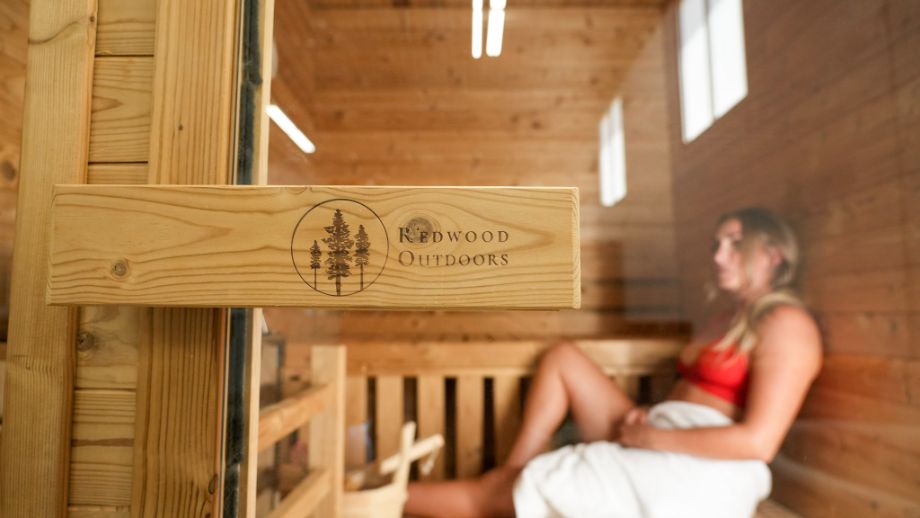We test and review fitness products based on an independent, multi-point methodology. If you use our links to purchase something, we may earn a commission. Read our disclosures.
While the best home saunas come in a wide range of prices, they aren’t cheap, and it’s important to protect your investment. Like anything else, proper maintenance will help you maximize the life of your sauna, and if you want your sauna to remain fresh and clean well beyond your first time using it, this article is for you.
As I’m not a sauna owner myself, I wanted to make sure I didn’t miss any important points, and enlisted the help of Sam Presley, GGR’s operations manager. Sam is the guy who makes sure everything runs smoothly at our testing facilities, and has been involved with nearly all of our sauna setup, testing, and maintenance.
What Is a Sauna?
A sauna is a contained space designed to trap heat and raise your body temperature when you spend time inside. A staple in Finnish culture, a traditional sauna often resembles a small wood cabin, though other shapes exist, like barrel saunas, vinyl saunas, and portable saunas that look like a pop-up tent.
While there are many types of saunas, the main purpose is to increase your body temperature using direct heat, infrared lasers, or a combination of both.
Dry saunas have a higher temperature and lower humidity levels, while wet saunas, or steam rooms, use lower temperatures, but try to fill the room with as much steam as possible.
As discussed in our guide to dry sauna benefits, regular use may provide a variety of health benefits, including:
- Improved cardiovascular health1
- Improved athletic performance2
- Relief from tight, sore muscles3
- Pain relief4 from arthritis
- Reduced anxiety5
- Improved sleep6
Why Sauna Maintenance Is Important
Regular maintenance of any type of equipment is important to make it last as long as possible. The best treadmills need periodic belt maintenance and lubrication, barbells should be periodically cleaned (especially if there’s rust buildup), indoor bikes may need bearing replacements…the list goes on.
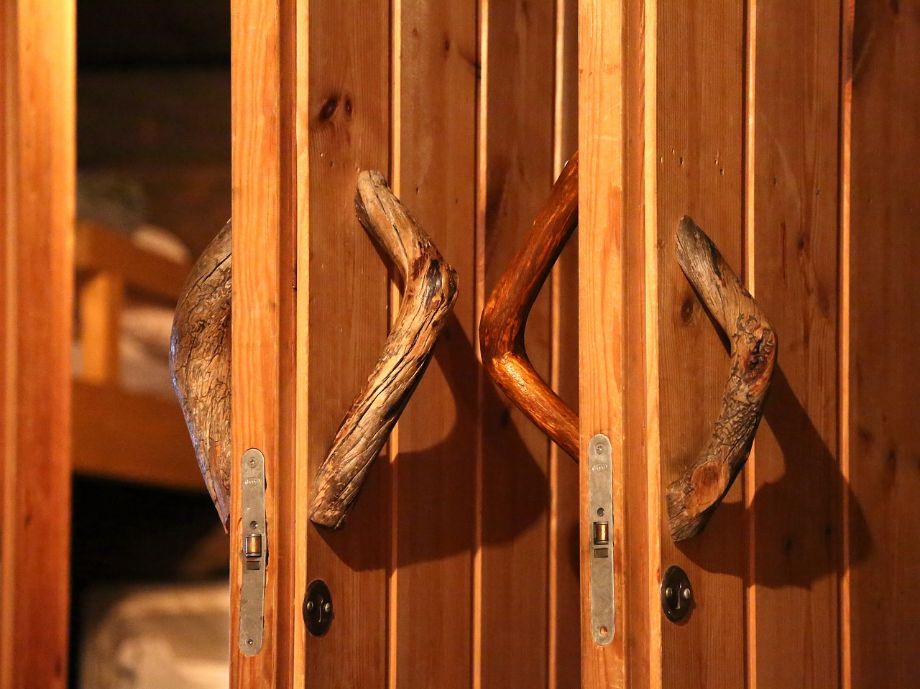
With saunas, you’re creating a warm climate and probably filling it with moisture as you sweat. Not only can this cause damage over time to certain materials, but this can also create a breeding ground for bacteria and odor, which nobody wants to experience in a hot room.
RELATED: How Long Should You Stay In a Sauna?
If you own one, you may think that you simply need to wipe it down after you’re done, but we have a few more tips from our resident sauna expert that can help you preserve the life of your sauna.
Sauna Maintenance Tips
Whether you’re a seasoned sauna owner or a first-time buyer, here are the most important maintenance tips you should follow to extend the life of your sauna.
Regular Cleaning
While it may seem obvious that you should keep your sauna clean, there are a few important tips to consider when it comes to cleaning. You may be able to use a simple cleansing wipe or dry towel to wipe down sweaty gym equipment, but certain types saunas require a bit more care.
For a daily cleaning, you can keep a brush or sponge with a bucket of water, dip your brush in some warm water, and scrub down all surfaces of the sauna interior after use.
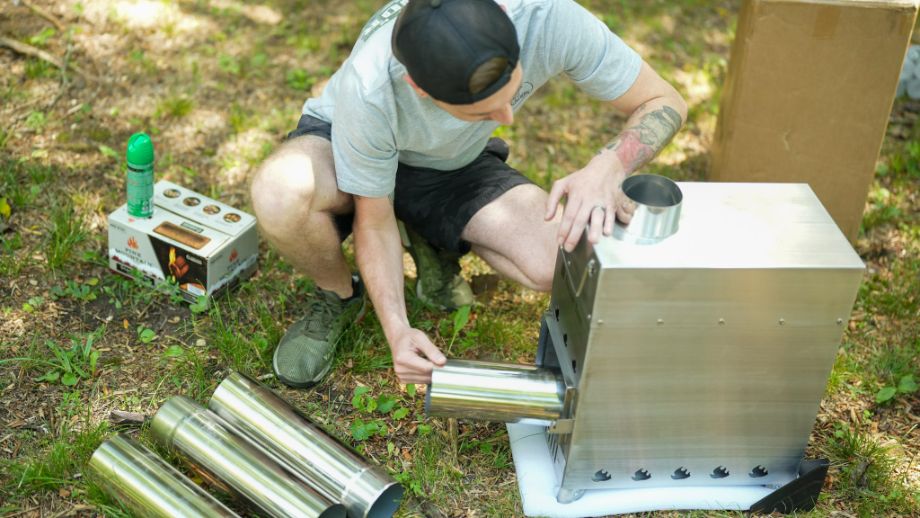
In addition to a daily wipe down, you’ll also want to periodically break out the serious cleaning tools. Sam points out that vinyl saunas, in particular, seem to really absorb smell and moisture, and suggests spraying them down after each use.
Special sauna cleaners exist, but you can also use a vinegar-based cleaning solution or another mild detergent or disinfectant. This helps remove the odor from the vinyl, preventing your sauna from smelling like a gym locker room after only a few weeks.
Ventilation
Since moisture in a warm climate can quickly breed bacteria and odor, you’ll want to make sure to ventilate your sauna as often as possible to allow plenty of airflow. When you’re done using your sauna, leave the sauna door open so it can dry itself completely between uses.
RELATED: History of Saunas
This may seem like a waste of heat or an unnecessary habit, but it’s worth it to prevent a buildup of mildew in your sauna. If you have an indoor sauna and don’t want to release the hot air into your living space, you can let it cool down naturally, but you should still go back and leave the door open between uses.
Use a Towel
Sam also notes that wood sauna benches tend to be very porous. Even when leaving the door open to dry, the seat can easily absorb excess moisture from sweat or water, which can damage the wood over time and lead to a moldy smell.
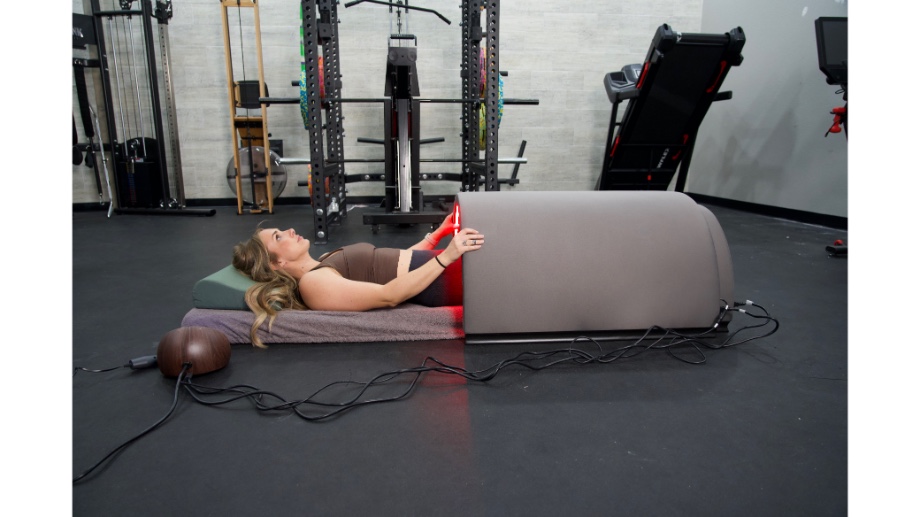
Sam’s advice? Be sure to always sit on a towel during your sauna session to absorb sweat and protect the bench and backrest from unnecessary moisture.
Weatherproof Your Outdoor Sauna
Many of the best outdoor saunas, especially wooden saunas, are already treated with a waterproof sealant and may have shingles on the roof. While this is a great feature, it doesn’t last forever, and exposure to sun and rain can wear down the sealant.
Sam suggests re-applying a water sealant once a year, as well as regularly checking the shingles on the roof, especially if you live in an area with regular wind and rain storms.
Use Distilled Water
Have you ever filled a humidifier with tap water and noticed a white film on all nearby surfaces? Those are particles from the minerals found in tap water, and they can damage your sauna.
Distilled water has had nearly all of the minerals removed and is the safest to use for your sauna. Using regular water can damage your sauna heater and cause hard water deposits to build up on the heat coils or sauna stones. It can also cause buildup in the steam generator of a wet sauna.
It may be slightly less convenient, but distilled water is much better for your equipment over the long haul.
Proper Installation
Finally, if you are using an outdoor sauna, you’ll want to make sure it’s properly installed on a level surface.
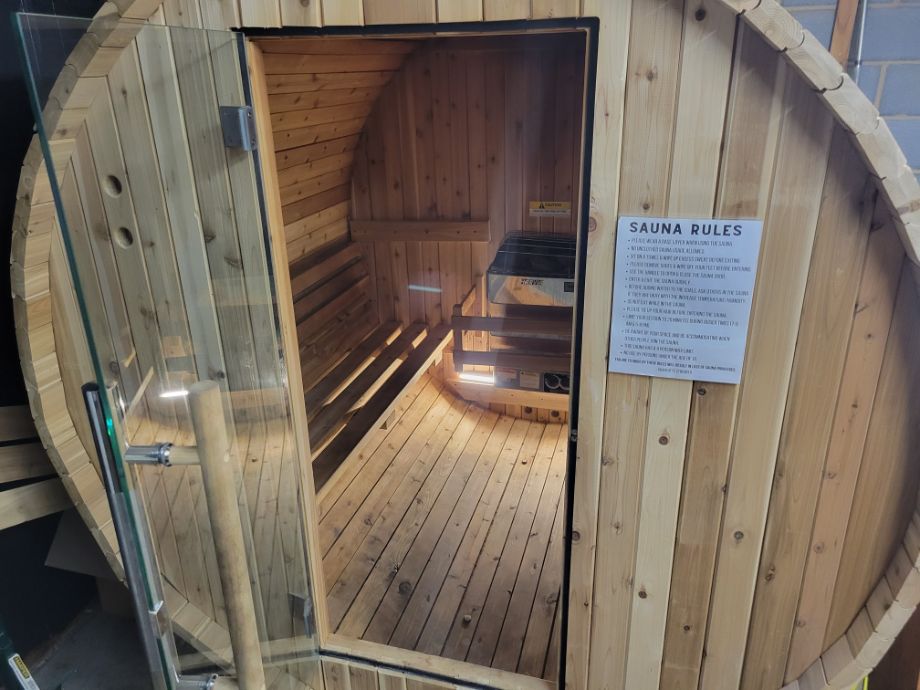
If you live in an area with rain, consider placing your sauna on cinderblocks, so that water can easily flow beneath it and won’t pool up, causing wood damage. Sam also suggests anchoring it to the ground if you live in an area like the Midwest, which is often prone to windstorms and tornadoes.
Types of Saunas
When it comes to saunas, there are a few variations you may be considering. While ongoing maintenance will be similar for each type, there are a few differences to consider.
RELATED: Wet Sauna vs. Dry Sauna
- Dry sauna: These saunas often use an electrical or wooden heater, often with hot rocks on top. Temperatures can reach 160 to 200 degrees Fahrenheit, but the humidity level is kept low. Your own sweat will create humidity, and some people pour water over the hot rocks, but the room is mostly dry.
- Wet sauna: A wet sauna, or steam room, typically uses lower temperatures and significantly higher humidity. The steam generators help maintain a temperature around 100 to 120 degrees Fahrenheit, with 100% humidity.
- Infrared sauna: An infrared sauna is a type of dry sauna. Rather than relying on heat alone, infrared saunas keep the room at lower temperature and use infrared light to help raise your core temperature.
Indoor vs Outdoor Saunas
While saunas are a standalone container that can resemble anything from a tent to a woodshed, that doesn’t mean you can place them anywhere. It’s important to know which type of sauna you have to ensure proper maintenance.
Outdoor saunas are among the most popular saunas, especially for those who want to enjoy a sauna at home without performing extensive home renovations to install one indoors. They often have wooden surfaces, may resemble a shed or cabin, and are quite sturdy once installed.
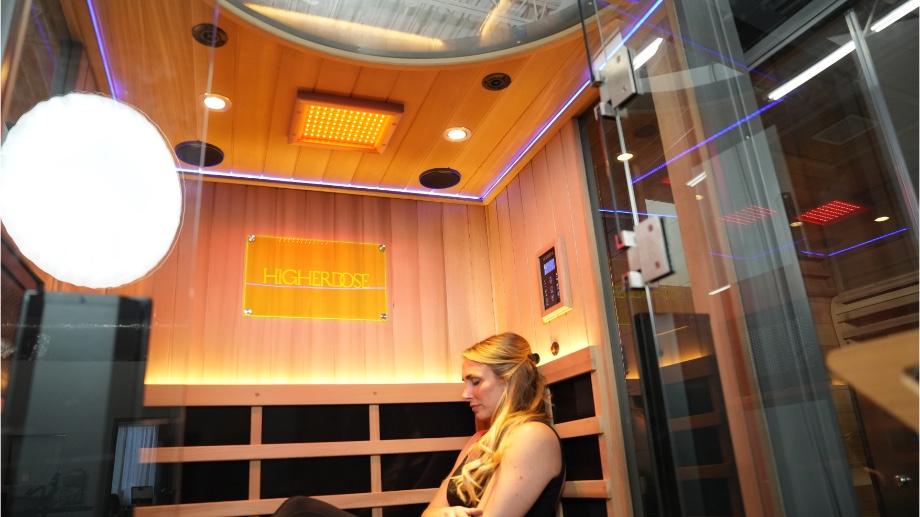
While they can be used indoors as well if you have a large enough space, they often include features like windows, larger designs, and weather-proof finishes to protect your sauna from the elements and allow you to enjoy the scenery.
Indoor saunas may be portable, or they may be something that’s built into the house, often in a basement, bathroom, or standalone sauna room. These aren’t exposed to the elements the way outdoor saunas are, but they still need upkeep and regular cleaning. Even if it’s portable, you shouldn’t leave a sauna outdoors unless it’s specifically designed for outdoor use.
Sauna Maintenance: Final Thoughts
While a sauna may seem like a durable investment that should last for years, proper care is the best way to maintain a hygienic environment. The wood surfaces in traditional saunas can easily absorb moisture, leading to a buildup of mildew and bacteria.
Whether you have a dry sauna, a wet sauna, or you’ve installed an indoor sauna in your home, the maintenance tips shared in this article will help keep yours in good condition for years to come.
Sauna Maintenance: FAQs
What maintenance is required for a sauna?
If you own a sauna, you need to clean it regularly and let it air out between uses. Ensure that outdoor saunas have a proper water sealant, which may need to be re-applied every year.
Are saunas a lot of maintenance?
Compared to owning a pool or hot tub, saunas have lower maintenance requirements, but they’re not something that you should ignore. Regular cleaning and maintenance helps prevent mildew and bacteria and can extend the life of your sauna.
Can mold survive in a sauna?
Yes. Even though saunas reach high temperatures, leftover moisture may still grow mold as the sauna cools, especially if the door isn’t left open to ventilate the sauna between uses. Wet saunas are also very susceptible to bacteria without proper cleaning.
References
- Laukkanen JA, Laukkanen T, Kunutsor SK. Cardiovascular and Other Health Benefits of Sauna Bathing: A Review of the Evidence. Mayo Clin Proc. 2018;93(8):1111-1121. doi:10.1016/j.mayocp.2018.04.008
- Kirby, N. V., Lucas, S. J. E., Armstrong, O. J., Weaver, S. R., & Lucas, R. A. I. (2021). Intermittent post-exercise sauna bathing improves markers of exercise capacity in hot and temperate conditions in trained middle-distance runners. European journal of applied physiology, 121(2), 621–635. https://doi.org/10.1007/s00421-020-04541-z
- Laukkanen, J. A., & Laukkanen, T. (2018). Sauna bathing and systemic inflammation. European journal of epidemiology, 33(3), 351–353. https://doi.org/10.1007/s10654-017-0335-y
- Hussain, J., & Cohen, M. (2018). Clinical Effects of Regular Dry Sauna Bathing: A Systematic Review. Evidence-based complementary and alternative medicine : eCAM, 2018, 1857413. https://doi.org/10.1155/2018/1857413
- Masuda, A., Nakazato, M., Kihara, T., Minagoe, S., & Tei, C. (2005). Repeated thermal therapy diminishes appetite loss and subjective complaints in mildly depressed patients. Psychosomatic medicine, 67(4), 643–647. https://doi.org/10.1097/01.psy.0000171812.67767.8f
- Hussain, J. N., Greaves, R. F., & Cohen, M. M. (2019). A hot topic for health: Results of the Global Sauna Survey. Complementary therapies in medicine, 44, 223–234. https://doi.org/10.1016/j.ctim.2019.03.012
Further reading

Check out our Diamondback elliptical 1280ef review for the inside scoop on this sturdy cardio machine. Read more

Looking to spice up your cardio with interactive programming? Our Echelon Connect EX-5 Bike review details just that. Read more

We expose a handful of treadmill features we’d like to see improved in our Echelon Stride 8s review. Read more

While the best home saunas come in a wide range of prices, they aren’t cheap, and it’s important to protect your investment. Like anything else, proper maintenance will help you maximize the life of your sauna, and if you want your sauna to remain fresh and clean well beyond your first time using it, this article is for you.As I’m not a sauna owner myself, I wanted to make sure I didn’t miss any important points, » Read more about: Sauna Maintenance Tips: How to Maximize Your Home Sauna Experience » Read more

